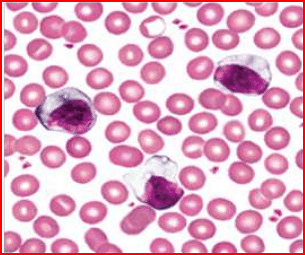A 25-year-old male presented with low hemoglobin, platelet count of 25,000/mL, gum bleeding, and raised PT & aPTT. The image of his peripheral smear is given below. What is the likely diagnosis?


- AML with t(8;21)
- AML with inv(16)
- AML with t(15;17)
- AML with t(11;22)
The Correct Option is C
Solution and Explanation
The presented case involves a 25-year-old male with the following clinical findings:
- Low hemoglobin
- Platelet count of 25,000/mL
- Gum bleeding
- Raised Prothrombin Time (PT) and Activated Partial Thromboplastin Time (aPTT)
The peripheral smear image, although not shown here, is crucial for diagnosing hematological disorders. In this scenario, the clinical presentation aligns with a particular subtype of Acute Myeloid Leukemia (AML).
Let us analyze the options:
- AML with t(8;21): Often associated with younger patients, it presents with specific cytogenetic abnormalities but does not typically present with the coagulopathy described.
- AML with inv(16): Another cytogenetic variant of AML, not the classic presentation associated with bleeding or coagulopathy.
- AML with t(15;17): Known as Acute Promyelocytic Leukemia (APL), this subtype is classically associated with severe coagulopathy due to disseminated intravascular coagulation (DIC), which leads to bleeding, including gum bleeding, as seen in this patient. Raised PT and aPTT are indicative of this condition.
- AML with t(11;22): This is not a recognized cytogenetic abnormality for AML.
Based on the characteristic presentation of bleeding and coagulation abnormalities, the likely diagnosis is AML with t(15;17), which is consistent with Acute Promyelocytic Leukemia (APL). Immediate identification is crucial due to the associated coagulopathy that requires prompt treatment with all-trans retinoic acid (ATRA).
Top Questions on Blood
- What is the liquid portion that forms after the blood clot?
- Identify the incorrect statements.
(A) Gametocytes of Plasmodium develop in the RBCs.
(B) Ascariasis pathogens are transmitted to a healthy person through the bite by female mosquito vectors.
(C) Entamoeba histolytica is a helminth parasite in the small intestine of humans, causing amoebiasis.
(D) Malarial parasite reproduces asexually in the gut of the mosquito.
(E) Filarial worms reside in the lymphatic vessels of the lower limbs.
Choose the correct answer from the options given below - When one of the parents has ‘A’ blood group and the other parent has ‘O’ blood group, then their child can have _______ blood group.
- As per ABO blood grouping system, the blood group of father is $B^+$ , mother is $A^+$ and child is $O^+$. Their respective genotype can be
A. $I^B i/I^A i/ii$
B. $I^B I^B /I^A I^A /ii$
C. $ I^A I^B /iI^A /I^B i$
D. $I^A i/I^B i/I^A i$
E. $iI^B /iI^A /I^A I^B$
Choose the most appropriate answer from the options given below : - The yellowish straw colored fluid portion that forms after the blood clot is called
Questions Asked in NEET PG exam
The normal pH of arterial blood is:
- NEET (PG) - 2025
- General Science
Which enzyme is deficient in Gaucher’s disease?
- NEET (PG) - 2025
- General Science
Which of the following cranial nerves is responsible for the motor innervation of the muscles of mastication?
- NEET (PG) - 2025
- General Science
The anticoagulant effect of heparin is monitored using:
- NEET (PG) - 2025
- General Science
The causative agent of malaria is:
- NEET (PG) - 2025
- General Science